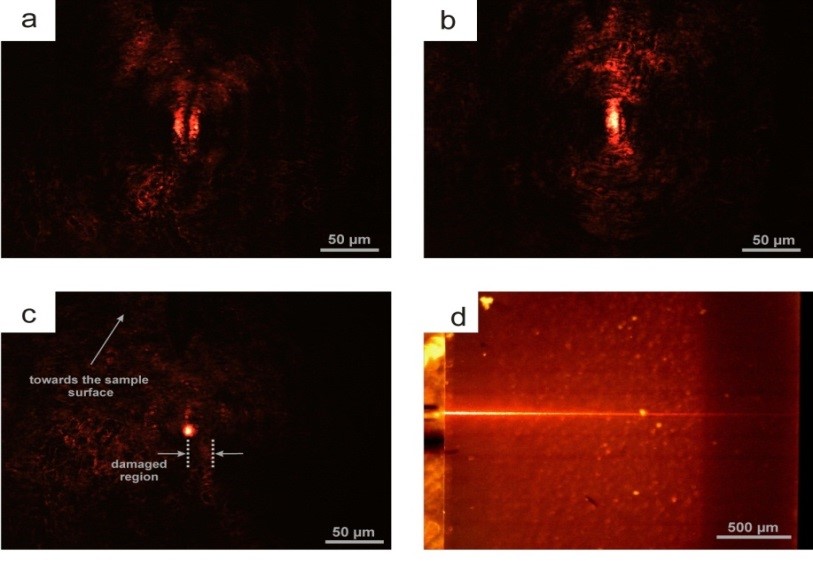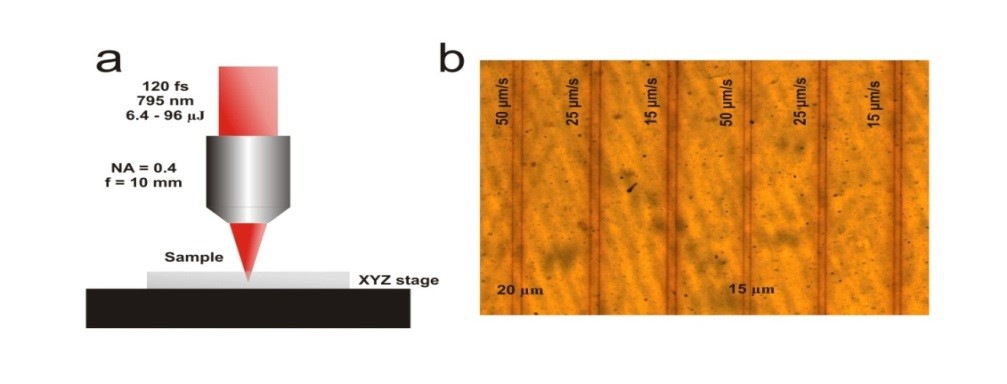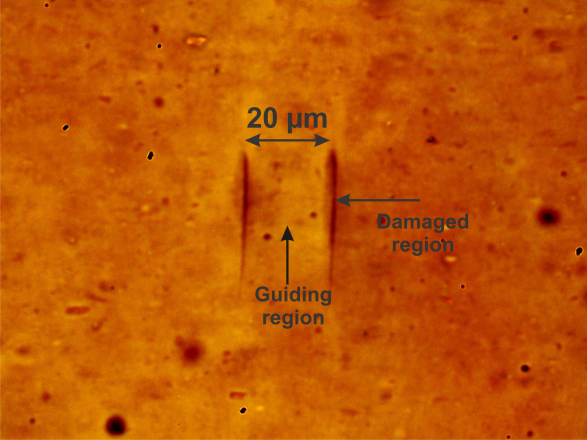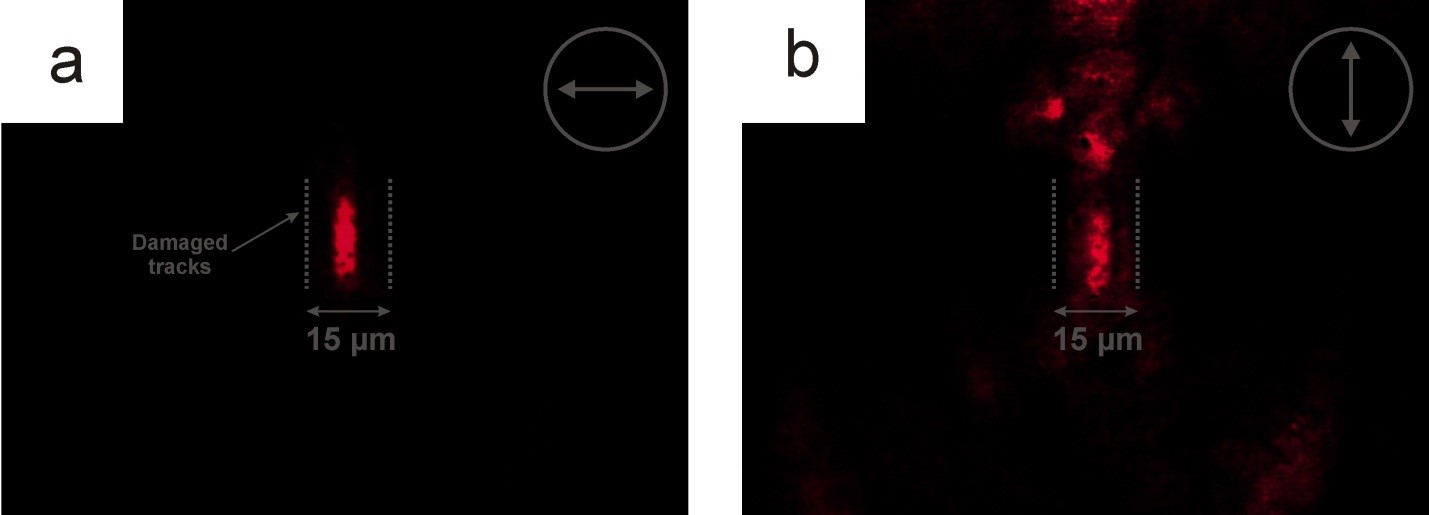CICESE: Santiago Camacho-López (lead), UCR: Guillermo Aguilar & Javier Garay — Thrust 3
Scientific/technological challenges: Although direct laser writing of waveguides in bulk transparent materials is well-established, little has been reported on laser-writing in polycrystalline transparent ceramics (PTCs). We have reported the formation of waveguide-like structures in nc-YSZ using ultralow fluence fs-laser pulses. A major scientific challenge is the understanding of the physical mechanism underlying the laser-material interaction that modifies the refractive index to form a waveguide. Typically, direct writing of waveguides in transparent materials (glasses, single crystals, & polymers) uses amplified fs-laser pulses delivered at kHz repetition rates. To create waveguides in glass, for instance, other high energy techniques are also used including ion implantation, although this requires linear accelerators, increasing cost and complexity. In most cases, waveguide formation results from laser-induced material densification due to optical breakdown, which launches a high pressure shockwave.
For waveguide writing in transparent nc-YSZ, we used pulsed fs-lasers with fluence/pulse well below the optical breakdown threshold (~ 5 nJ/pulse); we delivered pulses at 70 MHz, a very distinct scenario as compared with the prior literature where using amplified fs-laser systems is predominant. During ceramic synthesis oxygen vacancies are created. Our ultra-low fluence laser processing appears to be capable of producing the required refractive index increase for wave guiding by removing these oxygen vacancies, either through local charge density redistribution or oxygen diffusion.
Scientific/technological goals: To determine the origin of laser-induced refractive index modification requires a systematic study, consisting of writing waveguides on a WttB material using fs-laser irradiation; a challenging proposal is to use a previously deposited metallic thin film on the surface of the PTC to induce diffusion. Forming waveguides using this method may be possible even for lower per pulse energies. The ability to form waveguides using this method depends on the magnitude of the achieved refractive index increment and the optical transmittance; two quantities that will be fully characterized using those methods described in the optical characterization section.
Collateral scientific studies: A number of exciting new techniques and laser processing scenarios are envisioned: PTCs’ nonlinear optical properties; PTCs’ lasing potential, creation of an active photonic WttB platform.





Leave a Reply